68 Search Results for focused language stimulation
November 23, 2013
by Carole Zangari -
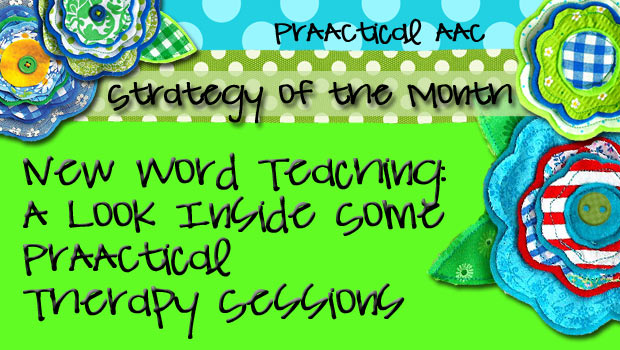
Since we’ve been talking about vocabulary instruction, we thought it might be fun to take a peek inside some therapy sessions where new words were being taught. In the examples below, we were teaching a core word and a Tier 2 vocabulary word over a few sessions. Here are some excerpts with their key intervention principles and practices. Target Words: do/did as an auxiliary (not main) verb Activities: Introduced a Visual Support (anchor chart): This explained the concept of ‘Helping Verbs,’ provided information on how they are used, listed them, and provided examples. These are effective tools for initial teaching, but are also invaluable for ongoing instruction. We use them extensively in language therapy, referring back to them often when we want to reinforce correct responses (look back at the visual together to further solidify the concept), help ‘fix’ incorrect responses (reteaching the pieces that didn’t stick), and facilitate self-correction... [Read More...]
November 9, 2013
by Robin Parker -
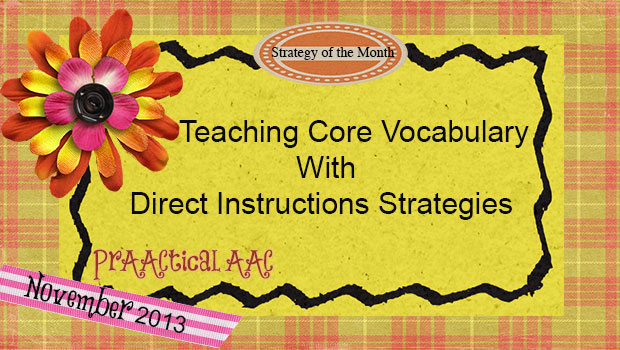
Vocabulary instruction involves a systematic TEACHING process. Core vocabulary words are harder to represent with pictures but still need to be taught with direct instruction. Many of the strategies and activities are part of general vocabulary teaching. Decide your core word vocabulary to teach and begin with strategies, steps, and fun activities. Teaching Strategies Teach in Meaningful Language Experiences– Create activities about the words but also about the communication behind the words. Develop activities that are meaningful to the learners. Provide Active Participation Opportunities- Develop many, many (many) opportunities for the learners to use the vocabulary as an expressive communication tool as well as for receptive language. Have the learner interact with the core word vocabulary rather than just listen to explanations. Give the vocabulary communicative power for the learner. Use Aided Language Input– Model AAC style. Use Focused Language Stimulation – Highlight new words and use them repetitively. We like... [Read More...]
September 13, 2013
by Carole Zangari -

It’s a new semester for us and we’re having lots of conversations with student clinicians about teaching strategies. Here are some of the things they’re putting in their AAC toolkits. Making language visible: Use visual supports to give information, explain, set boundaries, and make expectations clear. Aided language input and focused language stimulation: Teach AAC by speaking AAC. Communication temptations: Make the client want to communicate to get his/her own agenda met Expansions and extensions: The language facilitation strategies we all studied in our language intervention classes work in AAC, too! Repetition with variety: Working on the same thing in different ways is a sure way to build learning and keep treidthings fresh Contrastive examples: Teach through the power of clear examples, both positive AND negative Backward and forward chaining: Great for teaching things that have multiple steps, like sending emails or posting to Facebook Structure: Creating structure helps learner better... [Read More...]
August 29, 2013
by Carole Zangari -
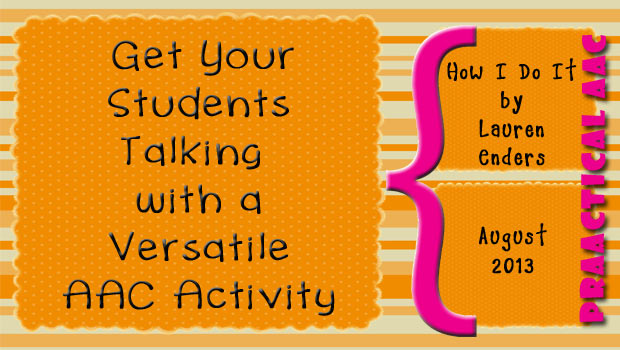
We are so excited to start off the new school year with a wonderfully prAACtical post by Lauren Enders. Lauren’s “How I Do It” posts have been very popular and this one is no different. Today, she shares ways to incorporate key AAC principles in engaging intervention activities and models that with high school students. :::::::::::::::::::::::::::::::::::::::::::::::::::::::::::::::::::::::::::::::::::::::::::::::::::::::::::::::::::::::::::::::::: LEARNING TARGETS (Samples: can be changed to meet student goals) Using core vocabulary, the student will: control the actions of others (beginning with core words like “more”, “stop”, “go”, “again”, and “different”) express his or her opinions through commenting (beginning with core words such as “like”, “don’t like”, “good”, “bad”, and “silly”) TARGET POPULATION: all ages (I have used variations of this activity successfully with students from age 3 through age 21.) TYPE OF AAC: ALL types!! What’s crucial here is the availability of core vocabulary, not the system used. Systems used can vary from... [Read More...]
August 22, 2013
by Carole Zangari -
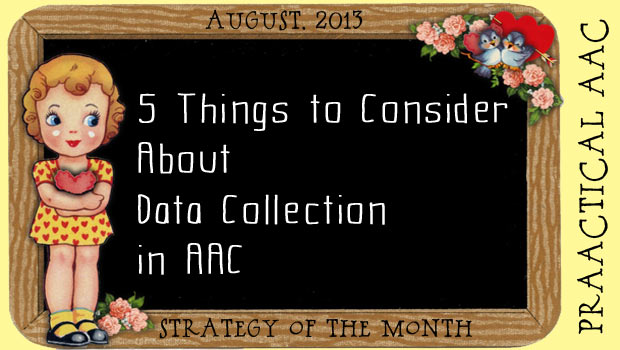
As a rule, SLPs are pretty good about collecting data in their clinical work. Here are some of our prAACtical thoughts about data collection. 1. Don’t bite off more than you can chew. We’ve visited several programs where the client data filled a huge 3-ring binder. In some places, they logged the data daily, reviewed it frequently, and actually USED it to make programmatic decisions. If that works for you, great! But most programs only reviewed the data when they had to report it or prior to a visit by someone who might want to see and discuss those data. In those cases, the data really wasn’t serving it’s original purpose: to see how instruction might need to be tweaked for a client who was learning quickly, slowly, or not at all. The takeaway: Don’t collect more data than you’re prepared to review and put to use. 2. We should... [Read More...]
April 25, 2013
by Carole Zangari -
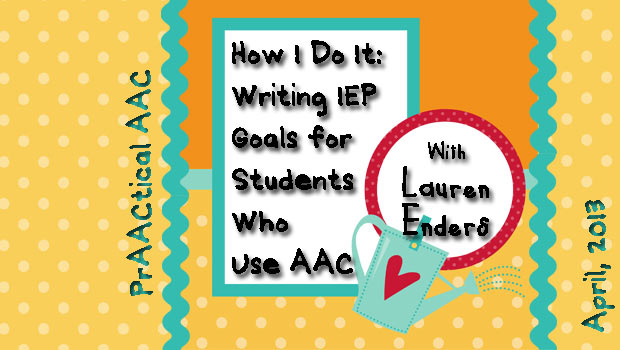
We’re so happy to welcome Lauren Enders back to share some more thoughts on AAC and the IEP. In her first post on this topic, Lauren addressed some frequently asked questions. Today, she provides a very valuable perspective on writing IEP goals for students who use or need AAC and some wonderful resources. Very often, I receive requests for support from teachers and speech therapists that are writing IEP goals for their students who use AAC. When we sit down to discuss their questions, the first thing I remind them is that AAC goals are no different from any other IEP goal. I recall a workshop I attended years ago presented by Gail VanTatenhove that helps put IEP goals for AAC into perspective. Gail said that AAC therapy is just language therapy. Isn’t that true? Aren’t we just teaching language? For this student, language is simply being expressed in a... [Read More...]
March 12, 2013
by Carole Zangari -
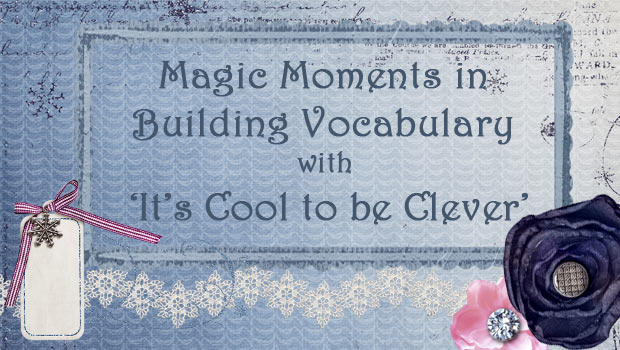
I had such a blast using this great (free) app that I couldn’t wait to get some time to blog about it. ‘It’s Cool to be Clever’ is about being different and uses the story of Edson Hendricks, an innovator who grew up in a small town in Pennsylvania and went on to develop an early design for what we now know as the world wide web. The app is based on a book by a former teacher, Leanne Jones, and contains compelling video and some lovely original music. It was created by Agio Studios. In his own voice, Hendricks tells his personal experiences of growing up feeling different from his peers, family, and community. There are four segments to the app. The Story: Narrated version of Hendrick’s biography, written by Leanne Jones, can be viewed so that you can read on your own, or have it read to you... [Read More...]
March 11, 2013
by Carole Zangari -
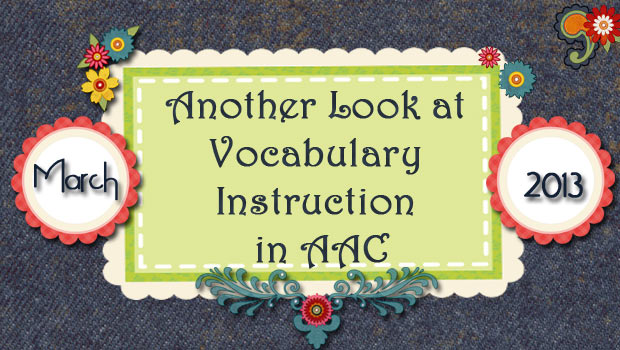
5 Things to Do to See If Your Vocabulary Instruction is Effective (& 5 Things to Do If It’s Not) AACtual Therapy: Fun & Functional Vocabulary with Shareka Bentham In the Treasure Bag: Using Sharing Time to Focus on Vocabulary Why We Love AAC Language Experience Activities 5 Great Sites for AAC Vocabulary Practice Complete Vocabulary Instruction Ideas & Activities Vocabulary Learning Materials & AAC Strategies Explicitly Speaking: Vocabulary Teaching in AAC Choosing a Focus for Vocabulary Instruction Building Word Consciousness: Vocabulary Instruction in AAC Vocabulary Learning Using Infographics Say THIS, NOT THAT to Reinforce Vocabulary Learning How to Use Magnets to Promote Language Development Vocabulary Activities: 5 Sites for Learning with Avatars What Makes a Good Vocabulary Teaching Activity? 4 Things to Look For Ideas about Vocabulary Instruction for the Beginning Communicator 10 Things to Do in Using Focused Language Stimulation in AAC Vocabulary Teaching Tell Me About It:... [Read More...]
January 4, 2013
by Carole Zangari -
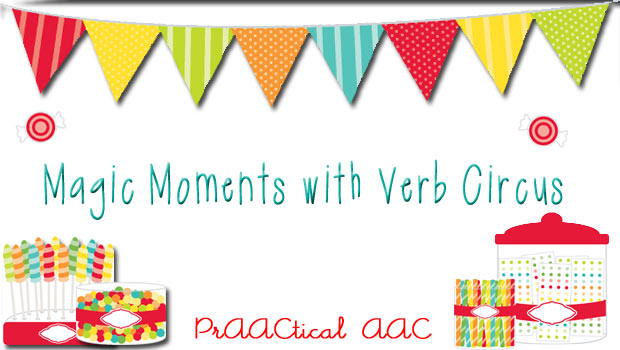
We are so excited to see the expanded web presence by SLPs who are blogging, running groups on Facebook, sharing resources on Pinterest, and maintaining online stores on TeachersPayTeachers. We’ve been thinking about how to connect with some of these creative professionals, both to extend our own professional learning networks and also to broaden the reach of our AAC message. Recently, when an opportunity to forge a few connections presented itself, we decided to collaborate with a few new SLP friends. Periodically, we will be featuring the materials of a fellow SLP who typically writes for colleagues serving primarily children with high incidence disabilities. They post great ideas and materials for students with articulation and phonological difficulties, fluency problems, and language disorders. We hope to put a prAACtical spin on their great ideas. In our inaugural post of this type, we hope to inspire some Magic Moments with fellow SLP Jocelyn... [Read More...]
December 18, 2012
by Carole Zangari -
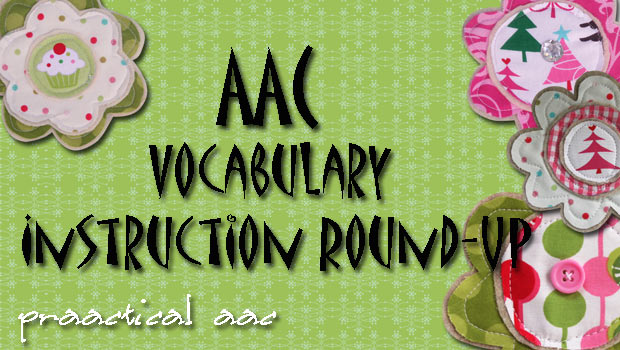
5 Great Sites for AAC Vocabulary Practice Complete Vocabulary Instruction Ideas & Activities Vocabulary Learning Materials & AAC Strategies Explicitly Speaking: Vocabulary Teaching in AAC Choosing a Focus for Vocabulary Instruction Building Word Consciousness: Vocabulary Instruction in AAC Vocabulary Learning Using Infographics Say THIS, NOT THAT to Reinforce Vocabulary Learning How to Use Magnets to Promote Language Development Vocabulary Activities: 5 Sites for Learning with Avatars What Makes a Good Vocabulary Teaching Activity? 4 Things to Look For Ideas about Vocabulary Instruction for the Beginning Communicator 10 Things to Do in Using Focused Language Stimulation in AAC Vocabulary Teaching Tell Me About It: Focused Language Stimulation In AAC Vocabulary Teaching Vocabulary Instruction In AAC









